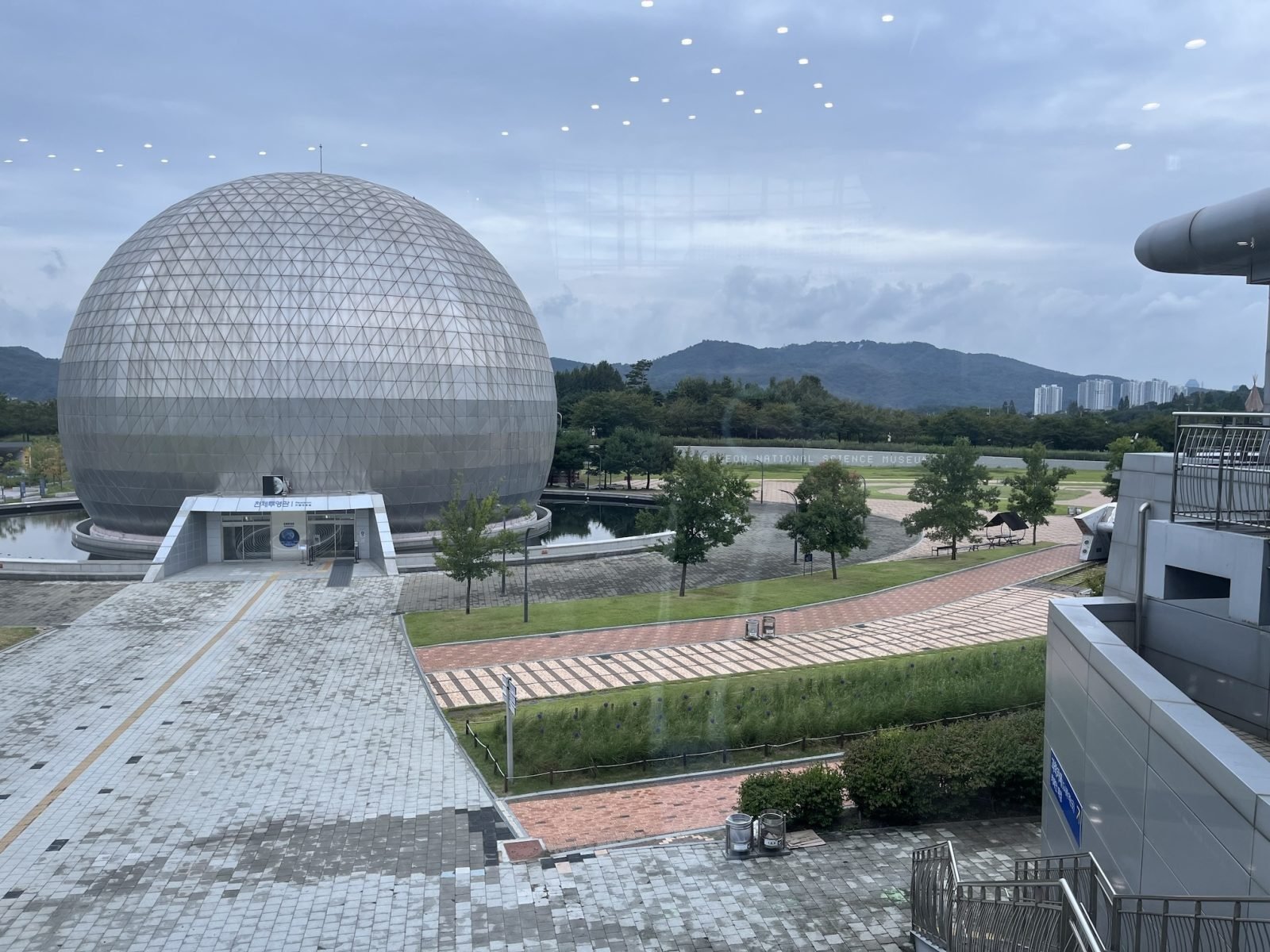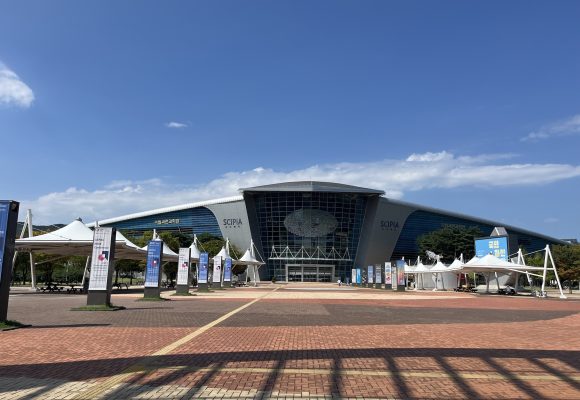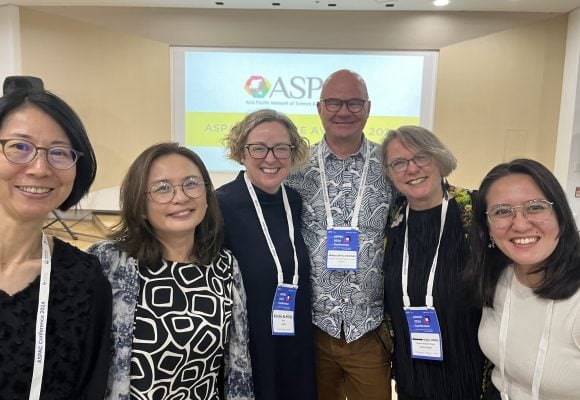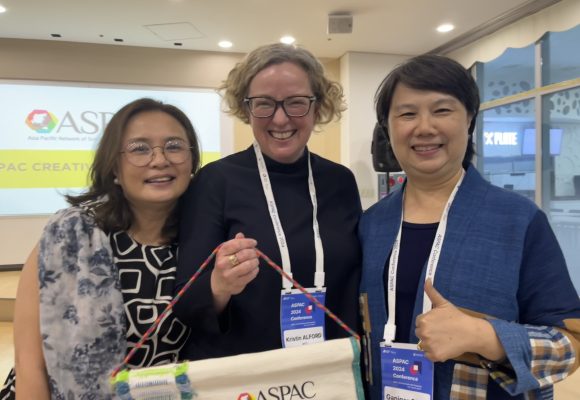Posted 28 Oct

Leaders, designers, and communicators from science centres in the Asia-Pacific Region gathered in Seoul, South Korea, in early September to share practices and exchange ideas. I was fortunate to be awarded an ASPAC Fellowship to attend so we could share some of our work on futures-oriented museums and how science centres might think about the future with their communities.
ASPAC this year was held at the Gwacheon Science Centre, which holds exhibits on science, natural history and technologies and includes a Planetarium and conference centre.

The first afternoon was an introductory session and dinner for CEOs of science centres in the region, allowing us to catch-up on strategic issues for the region and learn a little more about the key challenges and achievements of centres since the last gathering – while also enjoying some sparkling rice wine! ASPAC is a very friendly community that makes time to develop personal relationships across the region, which is important given the diversity of cultures and languages.

As well as participants from the region, the conference draws in people from Europe and North America, including those representing other regional bodies like ECSITE and ASTC. It was lovely to catch-up with colleagues from other futures-oriented museums including Miraikan (Tokyo), The Mind Museum (Manila), Heureka (Helsinki), Science Museum (London) and ArtScience Museum (Singapore).

The ASPAC Fellowship enabled me to co-present a workshop on futures-oriented museums with Maribel Garcia from The Mind Museum and Kimberly Arriola from the ArtScience Museum. Our workshop participants shared insights about the future of the sector and how futures thinking could be applied in exhibitions and programs. We facilitated a short workshop using the futures triangle to think about the future of our sector in the region, and there was a lot of interest in future-relevant topics such as climate and artificial intelligence (AI).
This was also reflected in session streams and it was interesting to see how fast the adoption of AI has been and contrast that with climate action. The region is a hot spot for climate and biodiversity so it was helpful to see perspectives focused on sea-level rise and pollution.
Other interesting sessions focused on collaboration. Sessions included travelling exhibitions and new ways of sharing concepts sustainably. We received a shout-out for our adaptation of Seven Siblings from the Future. The importance of collegiality and connection was underscored by insights into new projects in Taiwan, Malaysia, Thailand and China. There is a shift in how science centres are thinking about engagement with their communities. And how they are presenting topics. It was also interesting to hear SciTech in Perth and the Singapore Science Centre share how they worked to livestream the solar eclipse to interested publics from Regional Western Australia, they stressed the value of relationships in making this happen.

Finally, it was incredibly exciting for us at MOD. to be awarded the prize for Creative Exhibit for BROKEN. So proud of the team for delivering an exceptional exhibition acknowledged by this award. And also by the record numbers and feedback from our visitors too!

Thank you again for the opportunity to attend via the ASPAC Fellowship. And to talk about futures-oriented museums and share our work at MOD. Participating in such a friendly and collaborative region will open up new opportunities for us in the future.